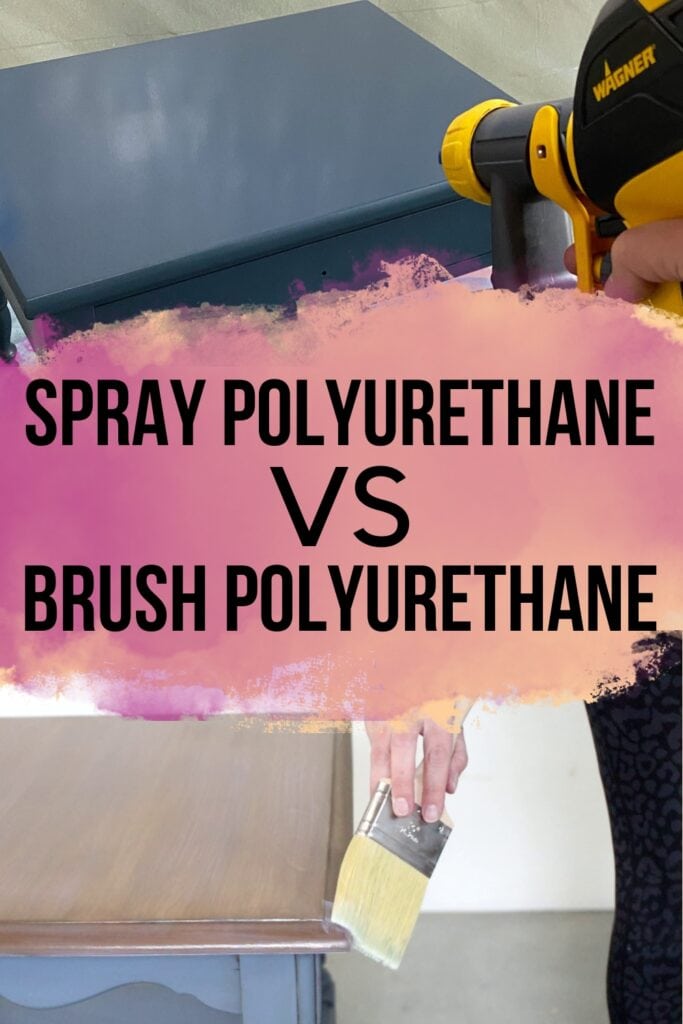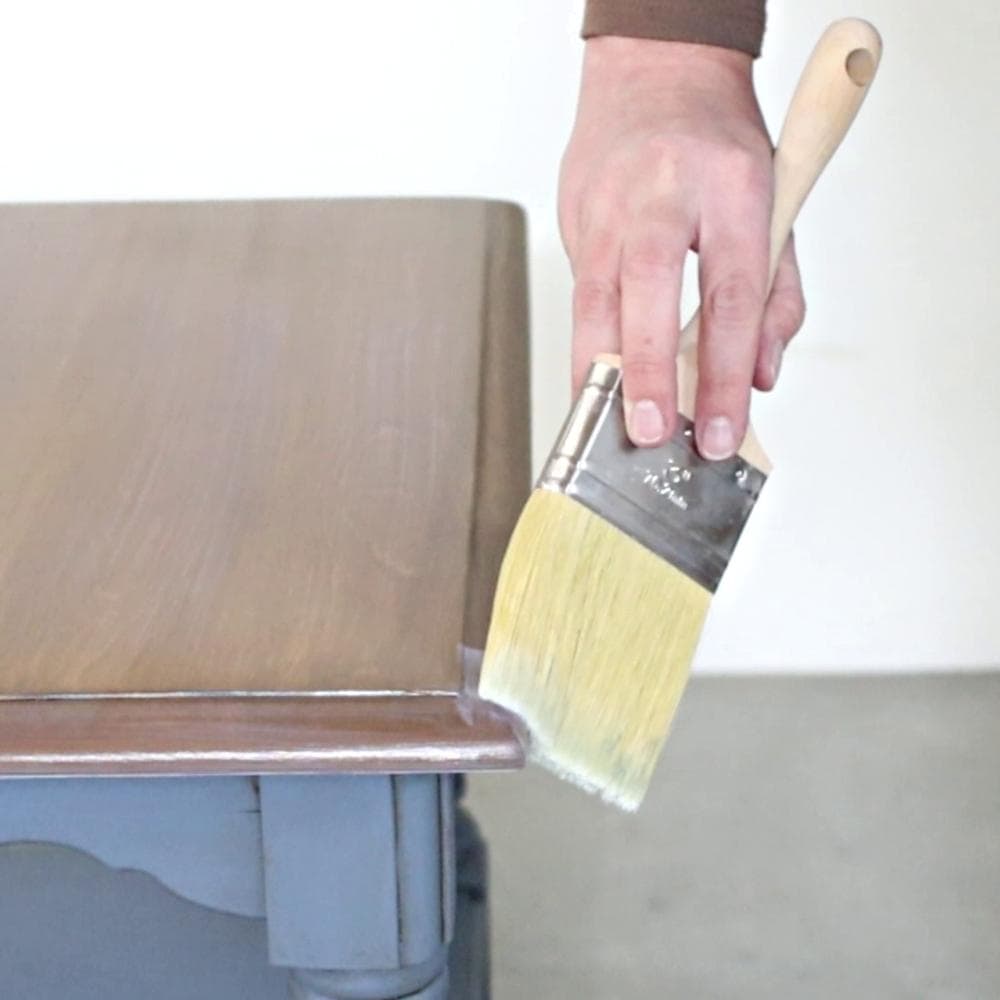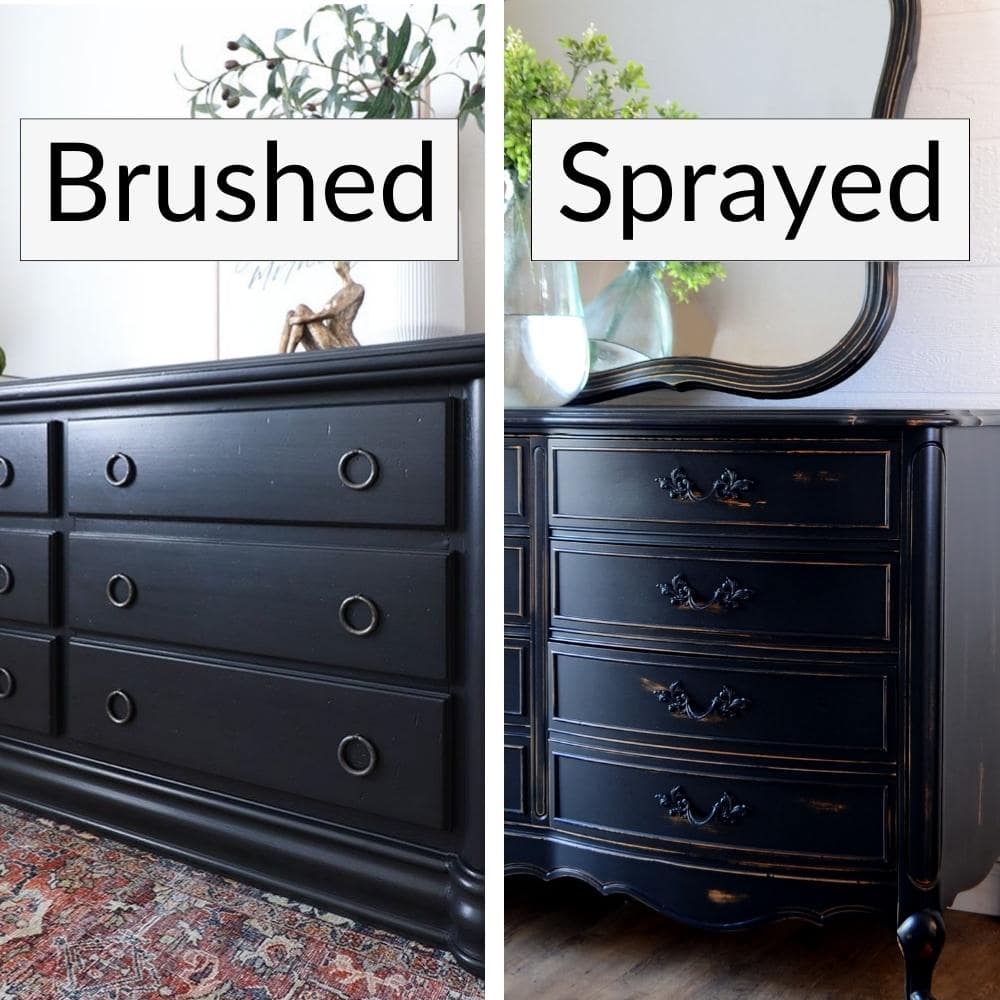Spray Polyurethane VS Brush On Polyurethane
Polyurethane is an essential component in many DIY projects, ranging from refinishing furniture to home renovation. However, choosing the right application method for your polyurethane can make or break the final result.
In this article, we will compare and contrast the benefits and drawbacks of two popular application methods of waterbased polyurethane: spray polyurethane VS brush on polyurethane. We will also explore the factors to consider when choosing between these two methods.

Polyurethane’s unique properties make it ideal for sealing, protecting, and enhancing surfaces, giving them a longer life span and a more polished look.
Whether you are refinishing your old furniture or laying down a new floor, polyurethane is the best way to protect your project.
However, when it comes to applying polyurethane, the choice between the spray-on and brush-on methods can be confusing. In this article, we will explore the pros and cons of both methods and help you choose the right one for your project.
The spray-on method involves atomizing the polyurethane into a fine mist and applying it to the surface using a spray gun, or using an aresole can of polyurethane.
The brush-on method, on the other hand, involves applying the polyurethane in thin layers using a brush, or sponge.
While both methods have their benefits and drawbacks, choosing the right method depends on several factors, as we will see in the rest of this article.
As an Amazon Associate, I earn from qualifying purchases. I also may earn from other qualifying purchases with other companies or get free product to review and use. All opinions are my own.
Water Based VS Oil Based Polyurethane
First, there are a couple of different kinds of polyurethane. Water based (also known as polycrylic) and oil based.
Learn more about Topcoats for Painting Furniture here.
Water based and oil based polyurethane each have their pros and cons, so choosing between the two depends on your specific project and preferences.
Water based polyurethane is a popular choice for DIYers and beginners. It has a shorter drying time, minimal odor, and is easy to clean up with just soap and water.
However, it doesn’t provide as durable of a finish as oil-based polyurethane and can be more prone to damage from water or other liquids. Water based poly is a great choice for indoor furniture or woodwork.
Check out this Black Coffee Table Makeover Idea where we used a water based polyurethane for the topcoat.
Oil based polyurethane provides a very hard, durable finish that’s resistant to stains and damage.
It has a longer drying time and strong odor and requires the use of mineral spirits for cleanup. The fumes and cleanup process can be unpleasant to work with.
However, if you’re finishing a floor, tabletop, or other surface that will get a lot of wear and tear, oil-based polyurethane is a great choice for maximum protection.
One last thing to consider with oil based polyurethane is that it has a yellow tint to it.
So if you paint something white, or a light color, and then use oil based polyurethane over it, your paint will have a yellow hue to it.
In the end, think about how you’ll use the finished product and how experienced you are with DIY projects. For a beginner-friendly option with minimal odor, go with water-based polyurethane.
If you need an ultra-durable finish, oil-based polyurethane is the way to go. Just make sure to work in a well-ventilated area and plan to clean things with mineral spirits.
Also, be extra careful with oil based products and what you use with them because oil based products are highly flammable.
Learn more about Polycrylic Vs Polyurethane to learn more about which one is right for your project.
I hope this helps as you choose between water-based vs. oil-based polyurethane!
Now, is it better to spray it on or brush it on? In the rest of this blog post, we are talking about using waterbased polyurethane (or polyacrylic.) Oil based polyurethane acts differently than waterbased polyurethane and doesn’t have the same pros and cons.
At the end, we’ll talk a little bit about spraying vs brushing on oil based polyurethane for anyone interested in that.
Spray Polyurethane
Spray polyurethane is a popular way to apply waterbased polyurethane to your projects. It provides a flawless, brush-free finish and is incredibly quick to dry.
When used with a paint sprayer or in a spray can (this is the best aerosol polyurethane spray!), spray polyurethane can also be a convenient option for large-scale projects because of how quick it is!
We’ve listed the best sprayers for polyurethane here.

Check out the Best HVLP Paint Sprayers for Furniture here.
One of the main benefits of spray polyurethane is the lack of brush marks and streaks in the finished product. This method is perfect for achieving a smooth, glossy finish that looks professionally done.
Additionally, the quick drying time means that you can get multiple coats applied in just a few hours. This is ideal for those who want to get their project completed as quickly as possible.
Learn How to Spray Polyurethane to get the perfect finish for your furniture.
Spraying polyurethane also prevents drips and runs and puddles on the edges of furniture, which in turn creates a much more professional look.
However, spray polyurethane is not without its drawbacks. The biggest downside to this method is the potential for overspray, which can cause damage to nearby objects.
You will need to take extra steps to protect surrounding surfaces and objects, which can add time and effort to the process.
Learn How to Prevent Overspray When Painting Furniture to avoid getting messy when working on your project.
Proper ventilation (I wear this respirator whenever spraying to protect myself) is also necessary to avoid health issues caused by the fumes.
We’ve laid out the essential steps when spray painting indoors here to protect yourself and your area.
Overall, spray polyurethane is an excellent option for those who want a flawless, professional-looking finish without any brush marks or streaks. It’s quick to dry and is perfect for large-scale projects.
Check out this Sofa Table Makeover in our blog post about Waverly Chalk Paint Review where we used a spray polyurethane for the topcoat.
However, it’s essential to take precautions to avoid overspray and protect nearby objects.
The use of spray polyurethane comes with its own set of advantages and disadvantages, so you’ll need to weigh the pros and cons of this application method to decide if it suits your needs.
Brush On Polyurethane
Brushing on water based polyurethane is a great option for beginners and those on a budget. Unlike spray polyurethane, brush-on polyurethane doesn’t require special equipment and can be applied with a brush or foam roller.
See this blog post about How to Refinish a Dresser where we applied a water based polyurethane using a Zibra topcoat brush.
Check out the best paint brushes for polyurethane here.
You can apply it indoors without worrying about getting overspray on everything around you, or with the fumes that come with spraying.

However, brush-on polyurethane does have some downsides. The drying time is typically longer than spray polyurethane because it is typically applied thicker.
And it can be more difficult to achieve an even, streak-free finish. Brush marks are inevitable. Drips are common, especially on the edges of your project.
Also, remember to clean your brushes after each use so you can keep using them for future projects. Here’s how to clean paint brushes.
If you are set on applying polyurethane by hand, check out our post on How to Apply Polycrylic to Painted Furniture by hand, so you can learn the tricks that we use to get a streak free finish!
Best Polyurethane for Furniture
The best brush on polyurethane, or polyurethane to use in a paint sprayer is Varathane water based polyurethane.
It provides a durable and smooth finish that will protect your projects from scratches, scuffs, and stains. Plus, it’s water-based, making it easy to clean up with just soap and water.
The clear formula won’t yellow over time, preserving the natural look of your woodwork or furniture.
For those who prefer spraying their polyurethane, Minwax Polycrylic in a spray can is the way to go. Check out the best spray polyurethane for furniture here.
This clear, water-based formula can be easily sprayed on any surface to achieve a smooth, even finish.
The spray can allow for easy and precise application, minimizing any potential for brush marks or drips. And, it’s the best spray can version out there!
Check out this post to learn more about the best clear polyurethane spray for wood. Learn more about the features, and pros and cons of Minwax polycrylic spray here.
Still, having a hard time knowing which polyurethane fits your project. Find out what’s the best polyurethane for furniture here.
Spray On Polyurethane VS Brush On Polyurethane
In the end, whether you choose brush-on or spray polyurethane comes down to your specific project and skills.
If you’re on a budget or new to DIY projects, brush-on polyurethane is a great place to start. Take your time and apply 3 thin, even coats for best results.
For larger projects or if you want a flawless finish, spray polyurethane may be worth the investment. Carefully follow the instructions and work in a well-ventilated area to avoid issues with overspray.

Can you see the streaky, hazy look on this black painted dresser? Find the makeover information for this dresser on our paint furniture black post.
Check out this DIY Blue Painted Nightstands makeover to see the result of using a spray polyurethane on furniture.
When choosing between spray and brush-on polyurethane, several factors should be taken into consideration. These include:
- Size of the project: For larger projects, spray polyurethane is more efficient.
- Budget: Brush-on polyurethane is usually cheaper than spray polyurethane.
- Indoor or outdoor use: When working indoors, proper ventilation is necessary when using spray polyurethane to avoid dangerous fumes. Brush-on waterbased polyurethane can be used without much ventilation.
- Detailed surfaces or flat surfaces: For detailed surfaces, spray on polyurethane is preferable to get into all of the little details without drips and runs.
- Desired finish and sheen level: Brush on polyurethane typically provides a smoother feeling, a glossier finish than spray on polyurethane. But, you’ll most likely see brush marks in your finish when you brush it on.
Take these things into consideration to help you decide which method is best for your project.
Read all about Painting Furniture with a Sprayer and How to Paint Furniture Without Brush Marks to learn more about painting with these different tools.
Oil Based Polyurethane
Now, as promised, let’s talk about how oil based polyurethane differs from what was said above.
Oil based polyurethane takes longer to dry and levels out very well, so, whether you brush it on, wipe it on, or spray it on, you won’t typically find streaks or brush marks left behind.
Either way, it also takes a long time to dry, and it has very strong fumes that need ventilation.
So, the difference between spraying and brushing oil based polyurethane on isn’t much.
If you want to use oil based polyurethane, here is the best spray can oil based polyurethane. I also love Minwax’s wipe on polyurethane when brushing on oil based polyurethane.
Learn more about the features, pros and cons, and how-to’s of Minwax polyurethane spray here.
Ultimately, the decision depends on your needs and preferences, but hopefully, this article has provided you with the necessary information to make an informed decision.
More tips on Spray Painting Furniture
- Spray Paint VS Brush Paint Furniture
- Spray Painting Furniture
- Spray Paint Tools You Need When Painting Furniture
- Homeright Finish Max Paint Sprayer Review
- Best Cheap Paint Sprayers
Follow us on YouTube to get more tips for painting furniture.
Or share your project with us on our Facebook Group and be part of our community. See you there!
